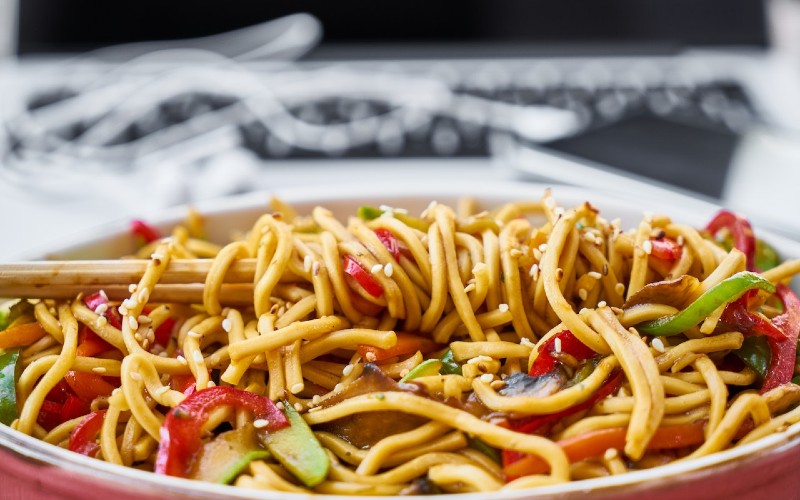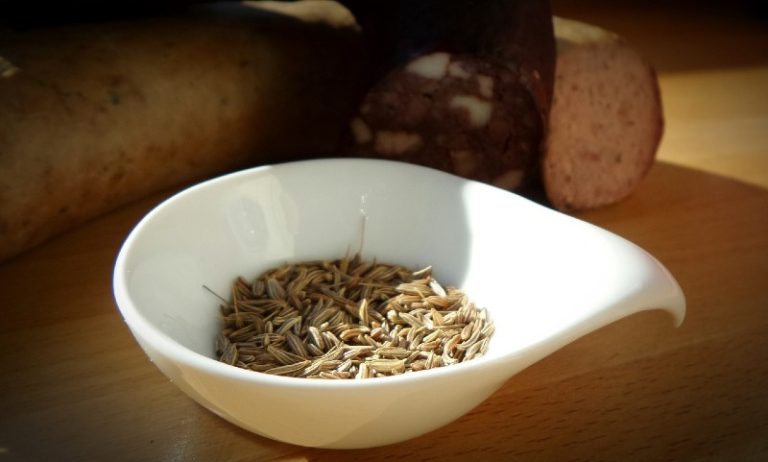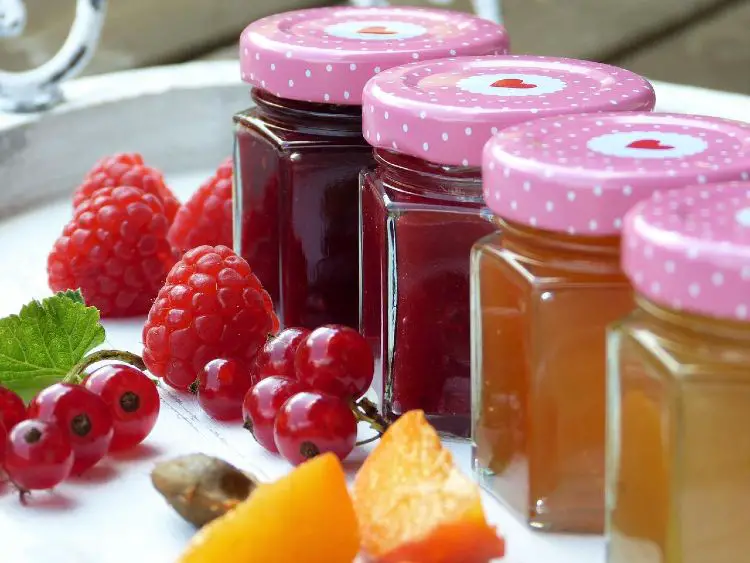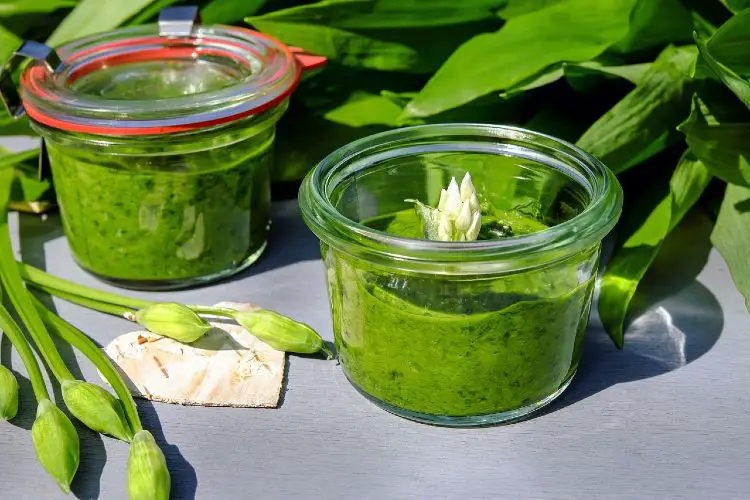Noodle Adventures: Unveiling The Best Lo Mein Substitutes!
Lo Mein noodles have become a beloved dish in Chinese cuisine, appreciated for their delicious taste, versatility, and satisfying texture. Originating from the Cantonese region of China, Lo Mein has spread its popularity across the globe, becoming a staple in many Asian restaurants and even making its way onto international menus.
Reasons to Explore Substitutes
While traditional Lo Mein noodles are delightful, there are various reasons why people might consider exploring substitutes.
Dietary restrictions and preferences, such as vegan or gluten-free diets, may call for alternative ingredients that can still deliver the rich flavors and textures of the original dish.
Additionally, with the growing interest in healthier eating and diverse culinary experiences, home cooks and chefs alike are eager to experiment with various noodle options to enhance their dishes.
Types of Lo Mein Noodles
- Egg Noodles: Classic Lo Mein noodles are often made with eggs, which impart a golden color and a rich, slightly chewy texture to the noodles. Egg-based Lo Mein noodles are popular in Cantonese cuisine and are commonly used in many Asian-American restaurants.
- Wheat Noodles: Wheat-based Lo Mein noodles, also known as “hokkien” or “chow mein” noodles, are another traditional option. These noodles offer a slightly different texture, being thinner and softer compared to egg noodles.
- Vegetarian Noodles: For those who follow a vegetarian diet, there are eggless Lo Mein noodles available, usually made solely from wheat flour and water, allowing them to be a suitable option for vegans as well.
Culinary Characteristics and Texture of Traditional Lo Mein Noodles
Traditional Lo Mein noodles are known for their pleasing chewiness and ability to absorb the flavors of the accompanying sauce and ingredients. When cooked correctly, they should have a delicate bite without being overly soft or mushy. The texture of Lo Mein noodles is a crucial factor in the overall enjoyment of the dish.
To prepare the noodles, they are typically boiled until al dente, then quickly cooled down to halt the cooking process. This helps maintain the desired chewy texture and prevents the noodles from sticking together.
Properly cooked Lo Mein noodles should be separate, smooth, and ready to soak up the flavorful sauce and mix seamlessly with various vegetables and proteins.
Common Lo Mein Noodles Substitutes
When it comes to exploring Lo Mein noodle substitutes, some alternatives are more commonly used and readily available than others. There are four popular substitutes that have become staples in many kitchens, offering a variety of flavors and textures to elevate your Lo Mein dishes.
Rice Noodles
Rice noodles are a widely loved and versatile substitute for traditional Lo Mein noodles. Made from rice flour and water, these thin and translucent noodles are a popular choice in Southeast Asian cuisine. They are naturally gluten-free and have a delicate, slightly chewy texture when cooked.
One of the advantages of using rice noodles is their ability to absorb the flavors of the accompanying sauces and ingredients, creating a harmonious blend of taste in every bite.
Rice noodles work exceptionally well in vegetable and tofu-based Lo Mein, as well as with seafood or poultry. They can also be found in various thicknesses, from thin vermicelli to wider flat noodles, allowing you to tailor your dish to personal preference.
Soba Noodles
Originating from Japan, soba noodles are another popular alternative to traditional Lo Mein noodles. These noodles are made from buckwheat flour, which gives them a nutty flavor and a slightly firmer texture compared to wheat-based noodles.
Soba noodles add a unique dimension to Lo Mein dishes, infusing them with the earthy taste of buckwheat. They pair wonderfully with a wide range of ingredients, from stir-fried vegetables to marinated meats.
Additionally, soba noodles offer the benefit of being a nutritious option, as they contain essential vitamins and minerals.
Zucchini Noodles (Zoodles)
For those seeking a lighter and lower-carb alternative to traditional noodles, zucchini noodles, also known as zoodles, are an excellent choice.
Zucchini noodles bring a refreshing and delicate crunch to Lo Mein dishes, while also allowing the other flavors in the dish to shine.
They are ideal for veggie-packed Lo Mein variations and can easily absorb the flavors of the sauce and seasonings used in the dish. Zucchini noodles also add a vibrant color to the dish, making it visually appealing and nutritious.
Spaghetti or Linguine
If you prefer to keep things simple and use readily available ingredients, regular spaghetti or linguine pasta can be a suitable substitute for Lo Mein noodles.
While these Italian pasta options may not replicate the exact texture of traditional Lo Mein, they do offer a delicious and familiar base for your dish.
To use spaghetti or linguine in place of Lo Mein noodles, it’s essential to slightly undercook the pasta to achieve a chewier texture. Additionally, adapting the sauce and seasoning to match the Asian-inspired flavors of Lo Mein will create a satisfying fusion dish that blends both culinary worlds.
Unique and Regional Substitutes
In addition to the common Lo Mein noodle substitutes, there are several unique and regional options that can add a delightful twist to your dishes. These substitutes draw inspiration from different cultures and ingredients, offering an exciting opportunity to infuse new flavors and textures into your Lo Mein-inspired creations.
Shirataki Noodles
Shirataki noodles hail from Japan and are made from the konjac yam plant. These translucent and gelatinous noodles are virtually calorie-free, low in carbohydrates, and gluten-free, making them an excellent choice for those seeking a healthier option.
Shirataki noodles have a unique texture, characterized by their chewiness and ability to absorb the flavors of the dish. While they don’t have a strong taste on their own, they lend themselves well to rich and savory sauces, such as the ones often found in Lo Mein.
When properly prepared, Shirataki noodles can be a surprisingly satisfying substitute, contributing to a guilt-free and flavorful Lo Mein experience.
Glass Noodles (Cellophane Noodles)
Also known as cellophane noodles or bean thread noodles, glass noodles are popular in various Asian cuisines, especially in China and Southeast Asia. Made from mung bean starch, glass noodles are thin, translucent, and slippery when cooked.
Glass noodles have a unique springy texture that adds a light and airy element to Lo Mein dishes. They are often used in clear soups and stir-fries due to their ability to absorb the flavors of the ingredients and broth.
When used in Lo Mein, glass noodles pair well with vegetables and seafood, creating a refreshing and delightful contrast to the heartier components of the dish.
Sweet Potato Noodles (Japchae)
Japchae is a Korean dish that features sweet potato noodles, also known as dangmyeon. These noodles are made from sweet potato starch, giving them a chewy and slightly sweet taste.
When used as a substitute for Lo Mein noodles, sweet potato noodles add a pleasant earthy flavor to the dish. They work exceptionally well with stir-fried vegetables and proteins, creating a colorful and nutritious Lo Mein-inspired meal.
The naturally vibrant hue of the sweet potato noodles adds an appealing visual element to the dish, making it a favorite among both cooks and diners.
Udon Noodles
Udon noodles are a thick, wheat-based Japanese noodle with a chewy and dense texture. While they are commonly used in soups, Udon noodles can also be a unique substitute for Lo Mein.
When using Udon noodles in Lo Mein-inspired dishes, it’s essential to consider their thickness and adjust the cooking time accordingly to achieve the desired texture. These hearty noodles work well with robust flavors and can hold their own against bold sauces and ingredients.
Exotic Substitutes
If you’re looking to take your culinary adventure to the next level, consider exploring some exotic Lo Mein noodle substitutes. These unique alternatives offer intriguing flavors and textures that will add a touch of excitement to your dishes.
Kelp Noodles
Kelp noodles are a gluten-free and low-calorie alternative made from edible brown seaweed. These clear, thin noodles have a neutral flavor, making them a versatile choice for various dishes, including Lo Mein-inspired creations.
Kelp noodles provide a light and refreshing aspect to Lo Mein dishes, with a slightly crunchy texture that sets them apart from traditional noodles.
They are an excellent option for those seeking a low-carb or gluten-free alternative, and they pair beautifully with fresh vegetables, tofu, or seafood.
Mung Bean Noodles (Glass Vermicelli)
Mung bean noodles, also known as glass vermicelli or bean thread noodles, are a staple in several Asian cuisines. Made from mung bean starch, these noodles are thin, translucent, and often used in soups and stir-fries.
When incorporated into Lo Mein-inspired dishes, mung bean noodles bring a delightful chewiness and the ability to absorb the flavors of the sauce and ingredients.
Their light and delicate nature complements vegetable-based Lo Mein variations, creating a dish that is both visually appealing and satisfying to the palate.
Buckwheat Noodles (Memil Guksu)
Originating from Korea, buckwheat noodles, known as memil guksu, are a popular choice for their nutty and robust flavor. These noodles are gluten-free and offer a delightful twist to traditional Lo Mein.
When used as a substitute, buckwheat noodles infuse a rich taste into the dish, adding depth to the overall flavor profile.
Their hearty texture pairs well with stir-fried vegetables and grilled meats, creating a dish with a touch of Korean influence and a burst of unique taste.
Konjac Noodles
Konjac noodles, also known as shirataki yam noodles, are similar to Shirataki noodles but made from the konjac plant’s corm. Like Shirataki noodles, they are virtually calorie-free and low in carbohydrates, making them suitable for those seeking lighter alternatives.
Konjac noodles is a fantastic choice if you’re looking to reduce calorie and carb intake. They have a distinct gelatinous texture, and while they don’t have a strong taste, they can easily absorb the flavors of the dish.
When prepared thoughtfully, konjac noodles can add a unique and satisfying element to your culinary creations.
Noodles Made from Vegetables
For those seeking lighter and more nutritious alternatives to traditional Lo Mein noodles, vegetable-based substitutes offer a wonderful solution.
These vibrant and wholesome options not only add an array of colors to your dishes but also provide a range of nutrients that contribute to a well-balanced meal.
Let’s explore some of the exciting vegetable-based Lo Mein noodle substitutes:
Carrot Noodles
Carrot noodles are made by spiralizing fresh carrots into thin, noodle-like strands. They offer a natural sweetness and vibrant color, making them a visually appealing addition to Lo Mein-inspired dishes.
Carrot noodles bring a delightful crunch and fresh taste to the dish, and their mild flavor pairs well with a variety of sauces and ingredients.
They are particularly suitable for vegetable-centric Lo Mein dishes, adding a touch of sweetness and a boost of nutrients to your meal.
Beetroot Noodles
Beetroot noodles are created using spiralized beetroots, infusing a gorgeous pink hue into your Lo Mein dish. These noodles boast a slightly earthy and sweet flavor, along with an array of essential vitamins and minerals.
When using beetroot noodles as a substitute, the dish takes on a unique twist, combining the savory and umami flavors of Lo Mein with the natural sweetness of beetroots.
This unconventional pairing results in a visually stunning and surprisingly delightful culinary experience.
Butternut Squash Noodles
Butternut squash noodles, made by spiralizing the bright orange squash, are a popular choice for their creamy and subtly sweet taste. These noodles add a touch of richness and hearty texture to your Lo Mein-inspired dishes.
Butternut squash noodles work exceptionally well with savory sauces and ingredients, creating a delightful balance of flavors.
They are an ideal option for those seeking a vegetable-based Lo Mein with a heartier and more substantial feel.
Whole Grain Noodles
For those seeking healthier and more wholesome alternatives to traditional Lo Mein noodles, whole grain substitutes offer a nutrient-rich and fiber-packed option.
Whole grain noodles are made from the entire grain, retaining the bran, germ, and endosperm, which provides additional vitamins, minerals, and dietary fiber. Let’s explore some of the delicious whole grain Lo Mein noodle substitutes:
Whole Wheat Noodles
Whole wheat noodles are a nutritious and heartier alternative to traditional white noodles. Made from whole wheat flour, these noodles retain the grain’s bran and germ, offering a nutty flavor and a slightly chewy texture.
Whole wheat noodles are an excellent source of fiber and essential nutrients, making them a healthier choice for Lo Mein-inspired dishes. They work well with a variety of sauces and ingredients, and their robust taste complements heartier proteins and vegetables.
Brown Rice Noodles
Brown rice noodles are a popular whole grain alternative that provides a lighter texture compared to whole wheat noodles. Made from brown rice flour, these noodles are gluten-free and offer a mild and slightly nutty taste.
Brown rice noodles are an ideal choice for those with gluten sensitivities or those seeking a lighter alternative. They pair beautifully with a wide range of ingredients, and their delicate taste allows the other flavors in the dish to shine.
Gluten-Free Substitutes
For individuals with gluten sensitivities or those following a gluten-free diet, finding suitable alternatives to traditional Lo Mein noodles is essential.
Fortunately, there are several gluten-free substitutes that provide the same satisfying texture and flavor, ensuring that everyone can enjoy a delicious Lo Mein-inspired dish.
Let’s explore some of the delectable gluten-free Lo Mein noodle substitutes:
Chickpea Noodles
Chickpea noodles, also known as chickpea pasta or Banza noodles, are made from chickpea flour. These gluten-free noodles boast a nutty flavor and a hearty texture, making them an excellent option for those seeking a protein-packed alternative.
Chickpea noodles bring a unique taste and additional nutritional benefits to Lo Mein dishes, providing essential protein, fiber, and various vitamins and minerals.
They work exceptionally well with vegetable-based Lo Mein variations and can be paired with a range of delicious sauces.
Lentil Noodles
Lentil noodles are made from red or green lentil flour, offering a rich and earthy taste. These gluten-free noodles have a smooth and slightly firm texture, providing a delightful bite to your dishes.
Lentil noodles are an excellent source of protein and fiber, making them a nourishing and satisfying substitute. When used in Lo Mein-inspired dishes, they bring a hearty and savory element that complements various vegetables and proteins.
Quinoa Noodles
Quinoa noodles, made from quinoa flour, are a nutrient-dense alternative to traditional wheat-based noodles. These gluten-free noodles have a mild and slightly nutty taste, adding a subtle richness to your dishes.
Quinoa noodles offer a complete protein source, making them an excellent choice for veggie-centric or plant-based Lo Mein dishes. Their versatility allows them to pair well with various sauces and ingredients, providing a balanced and wholesome meal.
Factors to Consider When Choosing Alternatives
When venturing into the realm of Lo Mein noodle substitutes, several essential factors come into play. Each substitute brings its own unique characteristics to the dish, and choosing the right one depends on various considerations.
Here are some key factors to keep in mind when exploring alternative ingredients:
Dietary Restrictions and Preferences
One of the primary reasons for seeking Lo Mein noodle substitutes is to accommodate dietary restrictions and preferences. For individuals with gluten sensitivities or those following a gluten-free diet, wheat-based noodles are off the table.
In such cases, rice noodles, zucchini noodles (zoodles), and other gluten-free options become viable alternatives.
For vegetarians and vegans, egg-based noodles are not suitable. Instead, use vegetable-based noodles or plant-based replacements like tofu, tempeh, or plant proteins to create a satisfying vegetarian or vegan Lo Mein dish.
Flavor Profiles and Texture Similarities
Another critical factor in selecting replacements is the flavor profile and texture similarities they offer. While some alternatives closely mimic the chewiness of traditional Lo Mein noodles, others may have a softer or firmer texture.
Consider how the substitute will complement the other ingredients in the dish and whether it will deliver the desired taste and mouthfeel.
Availability of Substitutes in Different Regions
The availability of certain alternatives may vary depending on your location. While rice noodles and spaghetti might be easily accessible in most places, more exotic options like kelp noodles or konjac noodles could be harder to find.
Local grocery stores, Asian markets, or specialty stores may carry a diverse range of noodle alternatives, so be sure to explore the options available in your area.
Cooking Techniques and Adaptability
Each Lo Mein noodle substitute may require specific cooking techniques to achieve the best results. Some alternatives might cook faster or slower than others, and understanding these variations will ensure your dishes turn out perfectly.
Moreover, consider the adaptability of the substitute to the various Lo Mein styles, such as chicken, beef, shrimp, vegetable, or vegan Lo Mein. Certain alternatives may pair better with specific protein and vegetable combinations, enhancing the overall dish.




